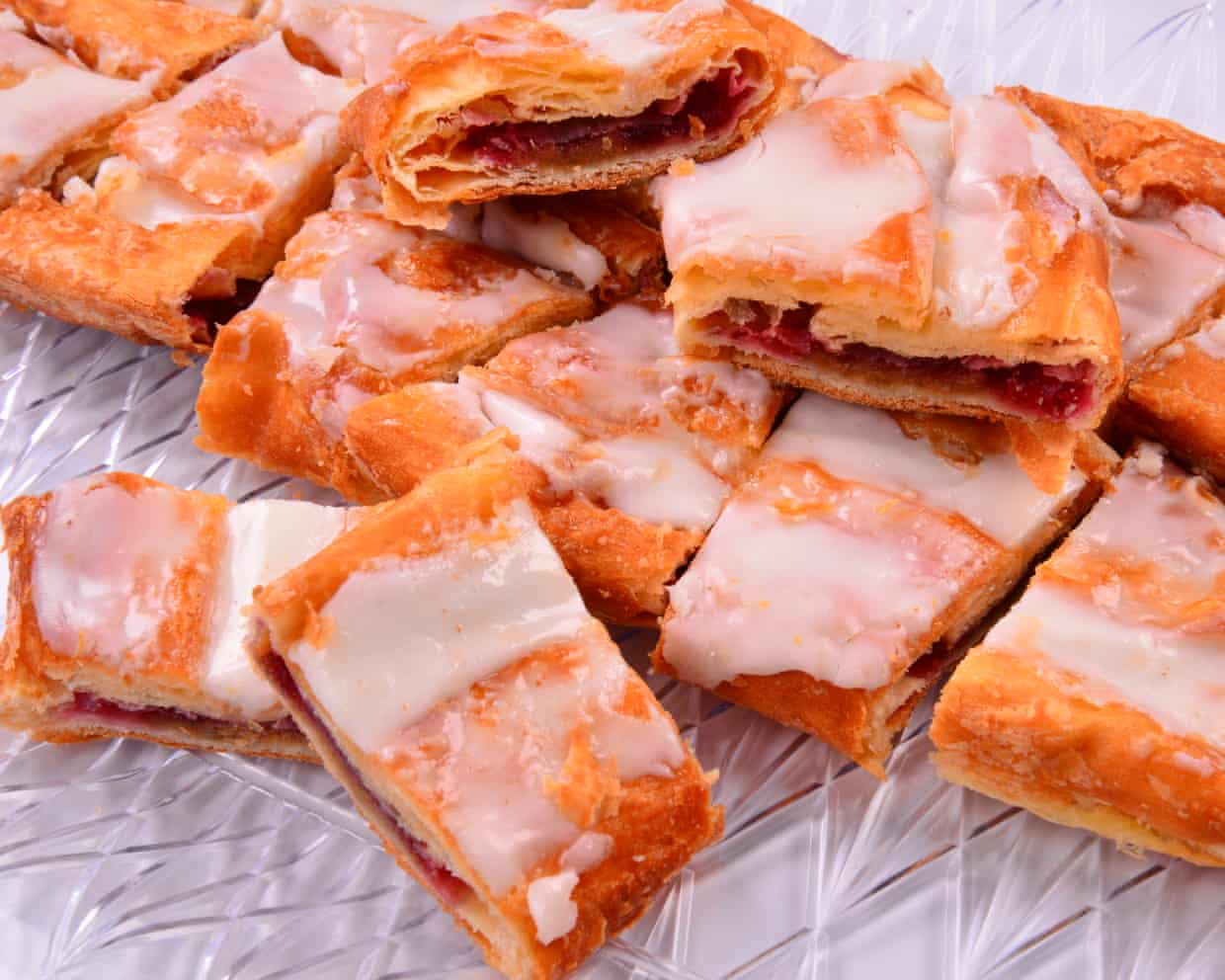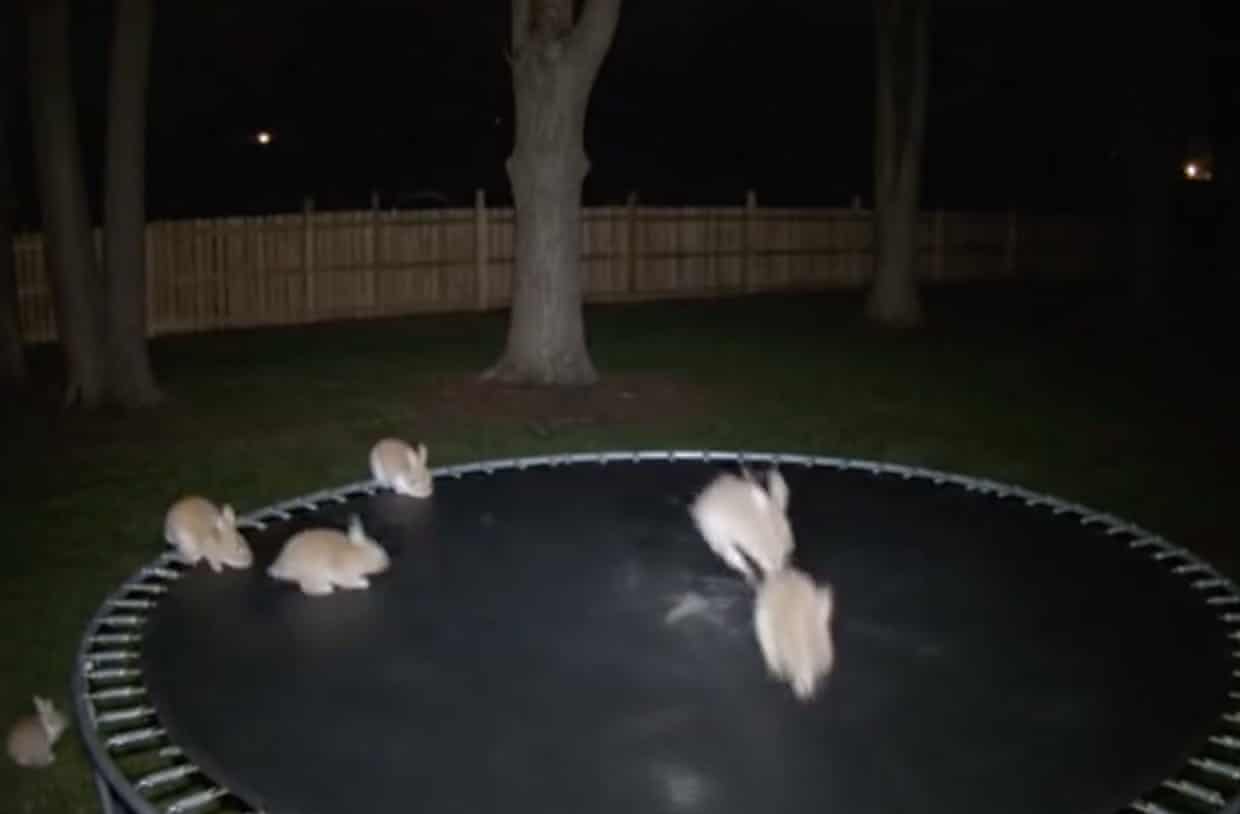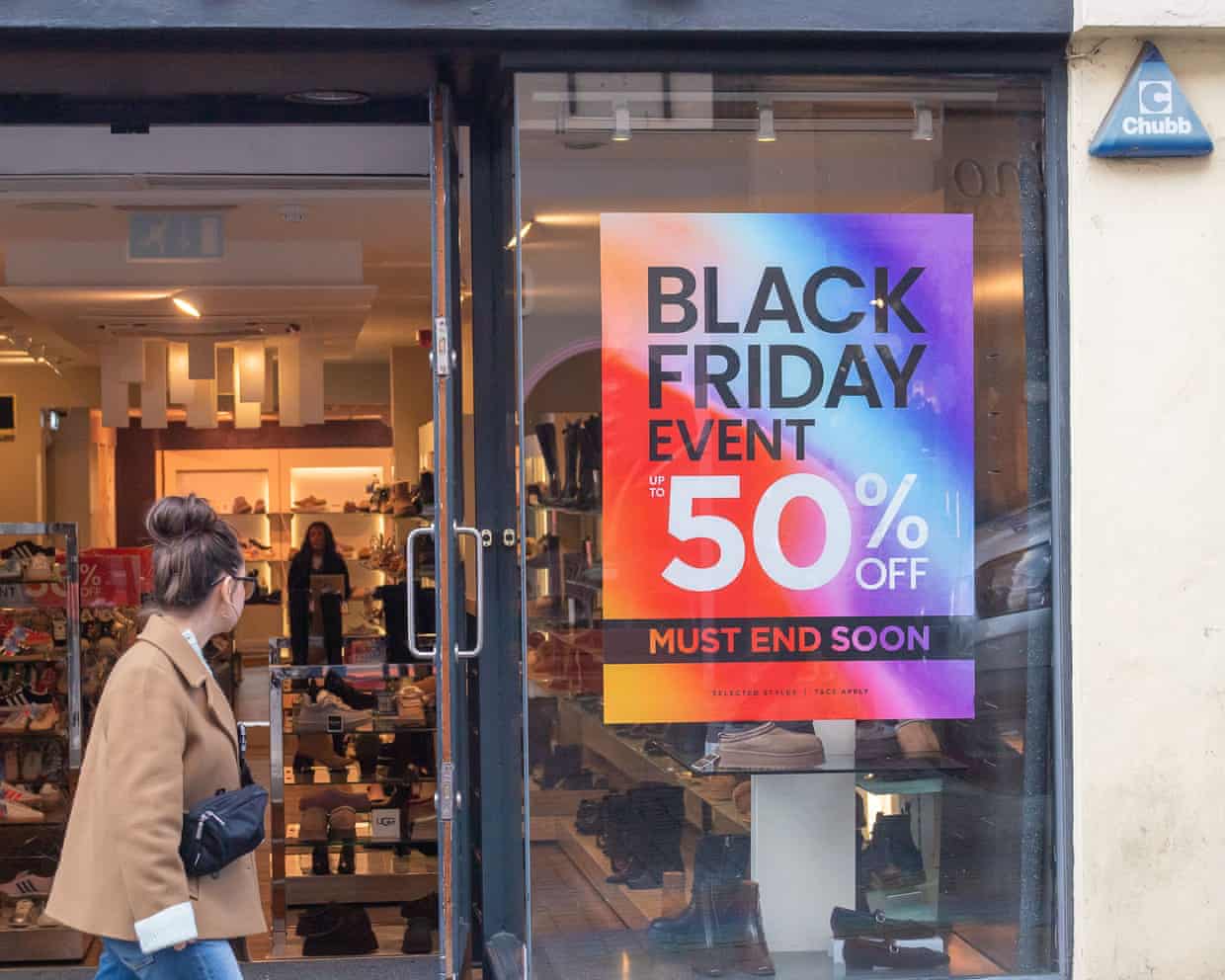Danish delight: Tim Anderson’s cherry marzipan kringle recipe for Thanksgiving

Kringles are a kind of pastry that’s synonymous with my home town of Racine, Wisconsin,Originally introduced by Danish immigrants in the late 19th century, they’re essentially a big ring of flaky Viennese pastry filled with fruit or nuts, then iced and served in little slices,Even bad kringles are pretty delicious, and when out-of-towners try them for the first time, their reaction is usually: ”Where has this been all my life?”We eat kringles year-round, but I mainly associate them with fall, perhaps because of their common autumnal fillings such as apple or cranberry, or perhaps because of the sense of hygge they provide,I also associate kringles with Thanksgiving – and with uncles,And I don’t think it’s just me; Racine’s biggest kringle baker, O&H Danish Bakery, operates a cafe/shop called “Danish Uncle”.
But I also think of Thanksgiving as the most uncle-y American holiday, geared towards watching football and snoozing on the couch,On Thanksgiving, you get together with your uncles (who all have strong, reliable uncle names such as Steve, Bob and Mike), and you talk about kringles, because you can’t talk about feelings or politics,Kringles are naturally convivial and conversational; Racinians will never eat kringle without debating the merits of various local bakeries (for the record: I’m a Bendtsen’s man until I die),Maybe the conversation never gets that deep with your uncles; maybe you can’t tell them that you love them, or even give them a hug that isn’t unnatural and awkward,But that’s OK, you can give them kringle instead.
Serves 8-10220g lukewarm milk 25g caster sugar 7g sachet dried yeast 1 tsp salt 200g strong white bread flour 160g plain flour 40g plain wholemeal flour 200g cold unsalted butter 230g marzipan 100g sour cherry jam or compote Beaten egg, to glazeIcing sugarIn a large bowl, combine the lukewarm milk, caster sugar, dried yeast, and a teaspoon of salt, then whisk to dissolve the ingredients into the milk.In a second bowl, mix the flours.Tip the flours into the milk mix, then stir with a spatula until everything comes together into a dough.Knead in the bowl until the dough has an even texture, without any dry or sticky patches, then cover loosely and leave to prove for one hour.Make a butter block by cutting the cold butter into 12 slices, then tiling them into a rectangle along a length of baking paper, two by six slices of butter across.
Fold the paper over the top of the butter like an envelope, then use a rolling pin to flatten the butter and press the edges of each slice together, to make a thin, solid block about 14cm x 32cm,Keep the butter wrapped in the paper, and transfer to the fridge,Roll the risen dough into a large roughly 16cm x 70cm rectangle,Peel the paper off the butter block, then put the butter block in the centre of the dough,Fold the sides of the pastry up over the top and press down on the edges to enclose the butter.
Fold the dough in by thirds (like you would a letter) to make three layers of butter, then put in a container and chill for 30 minutes.Rotate the dough into a landscape position, then roll it into a 30cm x 20cm rectangle.Fold into thirds again, then return to the fridge for another 30 minutes.Repeat this process once more, chilling again for 30 minutes.Cut the marzipan into thin slices about 2mm thick.
Cut the dough lengthways into two long rectangles, then roll each piece to 16cm x 70cm.Spoon the cherry jam or compote in a line down the centre of the dough, then lay half of the marzipan in a single layer on top of the jam.Fold the far edge of dough towards you and over the filling, and then fold the near edge of dough over the top of that, and pinch to seal.Curl the line of dough round to make a ring, tucking one end into the other.Repeat the process to make a second kringle.
Carefully transfer the rings to two trays lined with baking paper, brush the surface of each with beaten egg, then bake at 210C (190C fan)/410F/gas 6½ for 22 minutes, until well browned,Leave to cool, then flatten each kringle by laying another tray on to the surface and pressing down firmly,Drizzle with thick icing made with icing sugar and water, and leave to set before slicing and serving,Tim Anderson is the author of the 24 Hour Pancake People newsletter and Hokkaido: Recipes from the Seas, Fields and Farmlands of Northern Japan, published by Hardie Grant at £28,To order a copy for £25.
20, go to guardianbookshop.com.Rachel Roddy is away.

European parliament calls for social media ban on under-16s
Children under 16 should be banned from using social media unless their parents decide otherwise, the European parliament says.MEPs passed a resolution on age restrictions on Wednesday by a large majority. Although not legally binding, it raises pressure for European legislation amid growing alarm about the mental health risks to children of unfettered internet access.The European Commission, which is responsible for initiating EU law, is already studying Australia’s world-first social-media ban for under-16s, which is due to take effect next month.In a speech in September, the commission’s president, Ursula von der Leyen, said she would watch the implementation of Australia’s policy

ChatGPT firm blames boy’s suicide on ‘misuse’ of its technology
The maker of ChatGPT has said the suicide of a 16-year-old was down to his “misuse” of its system and was “not caused” by the chatbot.The comments came in OpenAI’s response to a lawsuit filed against the San Francisco company and its chief executive, Sam Altman, by the family of California teenager Adam Raine.Raine killed himself in April after extensive conversations and “months of encouragement from ChatGPT”, the family’s lawyer has said.The lawsuit alleges the teenager discussed a method of suicide with ChatGPT on several occasions, that it guided him on whether a suggested method would work, offered to help him write a suicide note to his parents and that the version of the technology he used was “rushed to market … despite clear safety issues”.According to filings at the superior court of the state of California on Tuesday, OpenAI said that “to the extent that any ‘cause’ can be attributed to this tragic event” Raine’s “injuries and harm were caused or contributed to, directly and proximately, in whole or in part, by [his] misuse, unauthorised use, unintended use, unforeseeable use, and/or improper use of ChatGPT”

Europe loosens reins on AI – and US takes them off
Hello, and welcome to TechScape. I’m your host, Blake Montgomery, writing to you from an American grocery store, where I’m planning my Thanksgiving pies.In tech, the European Union is deregulating artificial intelligence; the United States is going even further. The AI bubble has not popped, thanks to Nvidia’s astronomical quarterly earnings, but fears persist. And Meta has avoided a breakup for a similar reason as Google

Macquarie Dictionary announces ‘AI slop’ as its word of the year, beating out Ozempic face
AI slop is here, it’s ubiquitous, it’s being used by the US president, Donald Trump, and now, it’s the word of the year.The Macquarie Dictionary dubbed the term the epitome of 2025 linguistics, with a committee of word experts saying the outcome embodies the word of the year’s general theme of reflecting “a major aspect of society or societal change throughout the year”.“We understand now in 2025 what we mean by slop – AI generated slop, which lacks meaningful content or use,” the committee said in a statement announcing its decision.“While in recent years we’ve learnt to become search engineers to find meaningful information, we now need to become prompt engineers in order to wade through the AI slop. Slop in this sense will be a robust addition to English for years to come

AI could replace 3m low-skilled jobs in the UK by 2035, research finds
Up to 3m low-skilled jobs could disappear in the UK by 2035 because of automation and AI, according to a report by a leading educational research charity.The jobs most at risk are those in occupations such as trades, machine operations and administrative roles, the National Foundation for Educational Research (NFER) said.Highly skilled professionals, on the other hand, were forecast to be more in demand as AI and technological advances increase workloads “at least in the short to medium term”. Overall, the report expects the UK economy to add 2.3m jobs by 2035, but unevenly distributed

‘It’s hell for us here’: Mumbai families suffer as datacentres keep the city hooked on coal
As Mumbai sees increased energy demand from new datacenters, particularly from Amazon, the filthiest neighbourhood in one of India’s largest cities must keep its major coal plantsEach day, Kiran Kasbe drives a rickshaw taxi through his home neighbourhood of Mahul on Mumbai’s eastern seafront, down streets lined with stalls selling tomatoes, bottle gourds and aubergines–and, frequently, through thick smog.Earlier this year, doctors found three tumours in his 54-year-old mother’s brain. It’s not clear exactly what caused her cancer. But people who live near coal plants are much more likely to develop the illness, studies show, and the residents of Mahul live a few hundred metres down the road from one.Mahul’s air is famously dirty

Consumers urged to watch out for Black Friday scams and bad deals – business live

‘A step-change’: tech firms battle for undersea dominance with submarine drones

One in 10 UK parents say their child has been blackmailed online, NSPCC finds

Small changes to ‘for you’ feed on X can rapidly increase political polarisation

Chess: Sindarov, 19, becomes youngest World Cup winner as London Classic begins

Iga Swiatek: ‘I didn’t want to give any points for free – it’s a Wimbledon final and I wanted to win’